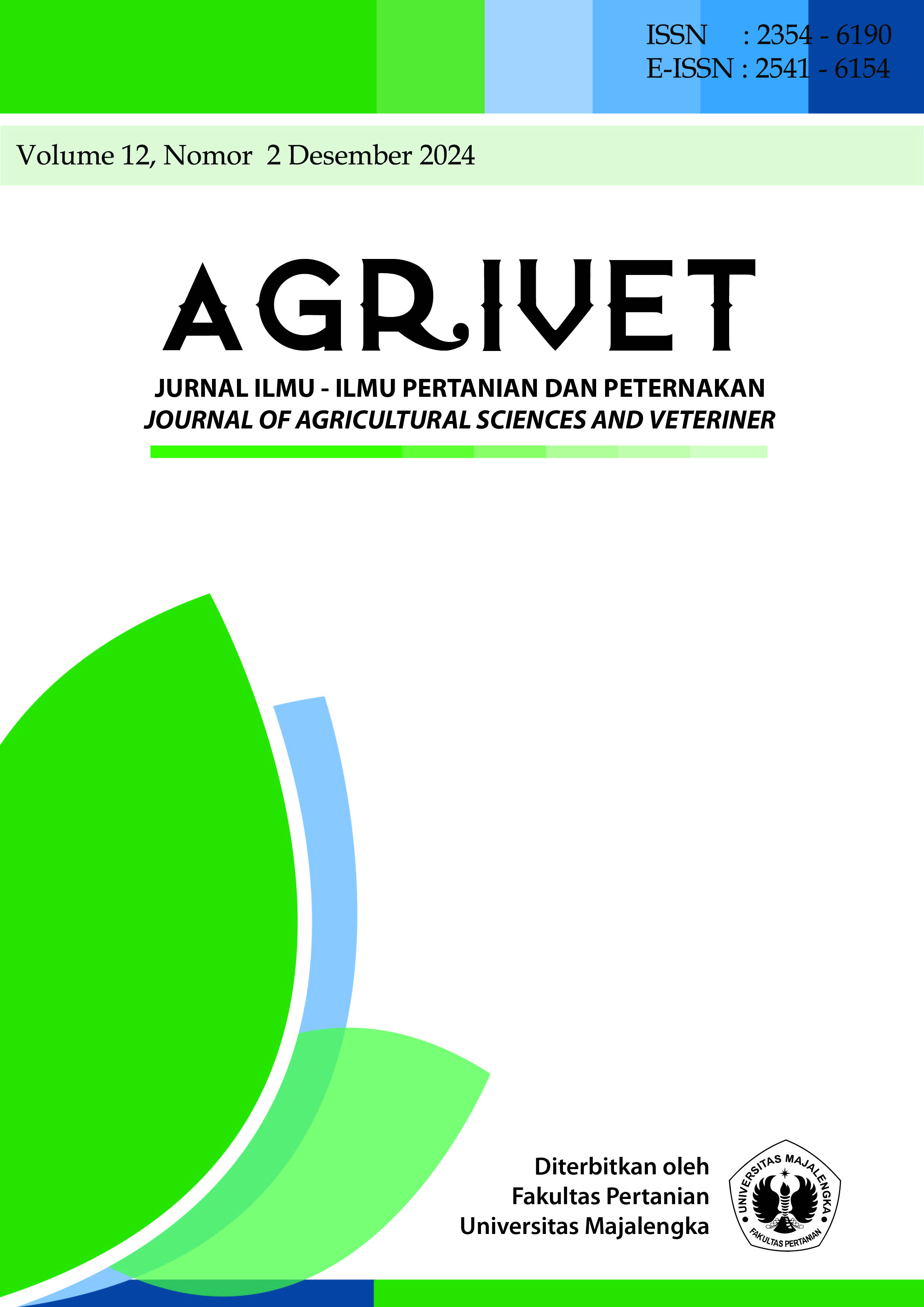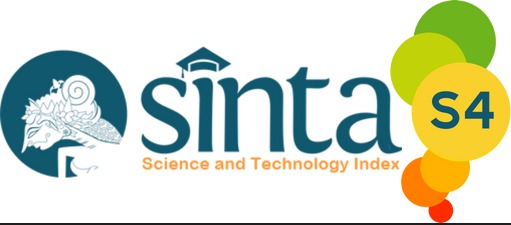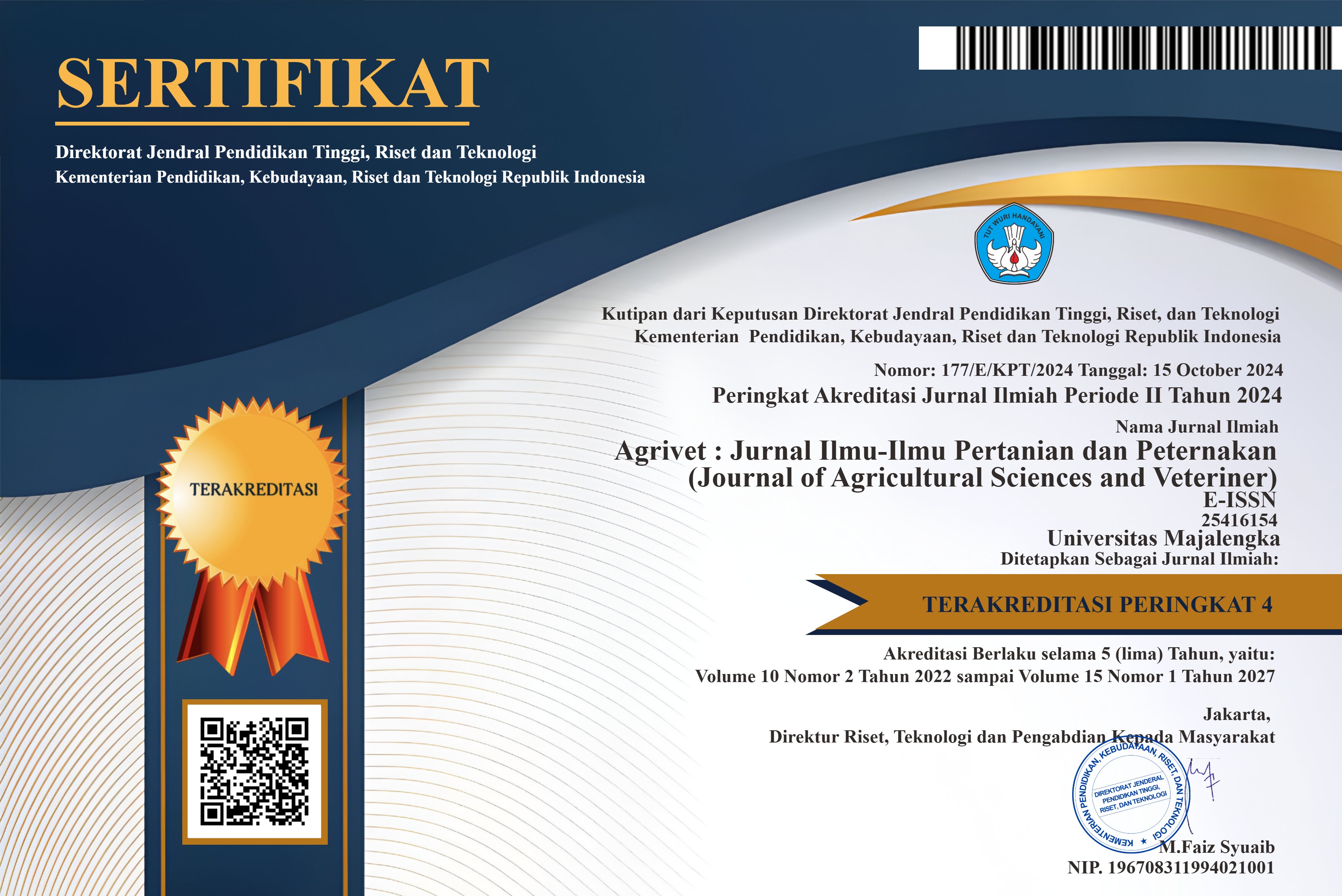Respon pertumbuhan dan hasil tanaman bawang merah (Allium ascalonicum) terhadap pemberian kompos limbah krisan
DOI:
https://doi.org/10.31949/agrivet.v12i2.11888Abstract
Chrysanthemum waste compost fertilizer is an alternative to processing chrysanthemum waste, which has so far only been piled up on land and has yet to be processed into appropriate technology. The effectiveness of compost fertilizer was tested on shallots because this commodity is promising in every planting season. This study aims to determine the appropriate dose of chrysanthemum waste compost to produce optimum growth and yield of shallot plants. This research was conducted in Tidu Village, Pohjentrek District, Pasuruan Regency, at an altitude of ±12.5 masl from June to August 2022. The study used a randomized block design with 1 factor of four treatments and six replications. The treatment are P0 (without adding chrysanthemum waste compost as control), P1: (5ton ha-1 dose of chrysanthemum waste compost), P2 (10ton ha-1 chrysanthemum waste compost dose), and P3 (15ton ha-1 chrysanthemum waste compost dose). The results showed that applying 15 tons ha-1 of chrysanthemum waste compost gave the highest yield on tuber weight of 18.34 tons ha-1. It can be concluded that chrysanthemum waste compost influences the growth and yield of shallots. Applying chrysanthemum plant waste compost of 10 tons ha-1 showed optimal growth and yield of shallot plants. The dry weight of the resulting wind is 17.67 tons ha-1. This result exceeded the potential yield of the tubers of the varieties used, which ranged from 12-16 tons ha-1.
Keywords:
Alternative, Chrysanthemum waste, Compost fertilizer, ShallotsDownloads
References
Aminah IS, Rosmiah, Palmasari B, Delfina D. 2022. Aplikasi pemberian pupuk organik dan pemotongan umbi terhadap pertumbuhan dan produksi bawang merah ( Allium ascolonicum L .) di lahan kering. J Agrotek UMMAT. 9(1):10–18.
Anvitha V, Sushmitha MB, Rajeev RB, Mathew BB. 2015. The importance, extraction and usage of some floral wastes. J Biotechnol Bioinform Bioeng. 2(1):1-6.
Arisona D, Purnamasari RT, Sulistyawati S. 2022. Pengaruh Pemberian Kompos Limbah Bunga Krisan (Chrysanthemum morifolium ) Terhadap Pertumbuhan Dan Hasil Tanaman Terung Ungu (Solanum melongena L.). J Agroteknologi Merdeka Pasuruan. 6(2):40. https://doi.org/10.51213/jamp.v6i2.78
Assiddiqi A Z, Sulistyawati, Purnamasari RT, Hidayanto F. 2022. Pengaruh Dosis Kompos Tongkol Jagung Terhadap Produktivitas Bawang Merah (Allium ascalonicum L.). ZIRAA’AH. 47(1):114–121.
Astami MT, Sutrisno J, Barokah U. 2018. Analisis Faktor-Faktor Yang Mempengaruhi Permintaan Cabai Rawit Merah Oleh Konsumen Rumah Tangga Di Kota Surakarta. Agrista. 6(3):51–61.
Badan Pusat Statistik. 2024. Produksi Tanaman Sayuran, 2021-2023 [Internet]. https://www.bps.go.id/id/statistics-table/2/NjEjMg==/production-of-vegetables.html
Hendra, Samudin S, Anshar M. 2016. Analisis pertumbuhan Tanaman Bawang Merah (Allium cepa L . Kelompok Aggregatum ) Varietas Lembah Palu yang Diberikan Atonik Serta Pupuk Organik Cair. J Agrol. 23(April):50–54.
Hidayanto F, Purwanto BH, Hidayah Utami SN. 2020. Relationship between allophane with labile carbon and nitrogen fractions of soil in organic and conventional vegetable farming systems. Polish J Soil Sci. 53(2):273–291. https://doi.org/10.17951/pjss/2020.53.2.273
Ilham F, Prasetyo TB, Prima S. 2019. Pengaruh Pemberian Dolomit Terhadap Beberapa Sifat Kimia Tanah Gambut Dan Pertumbuhan Serta Hasil Tanaman Bawang Merah (Allium ascalonicum L). J Solum. 16(1):29. https://doi.org/10.25077/jsolum.16.1.29-39.2019
Iswiyanto A, Radian R, Abdurrahman T. 2022. Pengaruh Nitrogen Dan Fosfor Terhadap Pertumbuhan Dan Hasil Kedelai Edamame Pada Tanah Gambut. J Sains Pertan Equator. 12(1):95. https://doi.org/10.26418/jspe.v12i1.60354
Mabel JM, Tuhuteru S. 2020. Pemanfaatan Limbah Rumah Tangga Sebagai Kompos Pada Tanaman Bawang Merah (Allium cepa var. Agregatum L.). Agritrop J Ilmu-Ilmu Pertan (Journal Agric Sci. 18(1):51–59. https://doi.org/10.32528/agritrop.v18i1.3030
Muharam M. 2017. Efektivitas Penggunaan Pupuk Kandang dan Pupuk Organik Cair Dalam Meningkatkan Pertumbuhan dan Hasil Tanaman Kedelai (Glycine Max L.) Varietas Anjasmoro di Tanah Salin. J Agrotek Indones. 2(1):44–53. https://doi.org/10.33661/jai.v2i1.720
Noval R, Yanti I, Pauzan M. 2024. Monitoring And Controlling System Based on Internet of Things (IoT) for Ornamental Chrysanthemum Plants. International Journal of Engineering Continuity. 3(1):126-138.
Pratiwi SH, Purnamasari RT, Hidayanto F, Bakhtiar ID. 2024. Respon Pertumbuhan dan Hasil Tanaman Stroberi (Fragaria sp.) Varietas Mancir Terhadap Pemberian Trichokompos Kohe Sapi dan NPK. Agroteknika. 7(1):24–38. https://doi.org/10.55043/agroteknika.v7i1.250
Purnamasari RT, Pratiwi SH, Hidayanto F. 2023. Effect of coconut husk organic fertilizer from liquid organic fertilizer waste on growth and yield eggplant (Solanum melongena L.). Acta Fytotech Zootech. 26(1):61–66. https://doi.org/10.15414/afz.2023.26.01.61-66
Purnamasari RT, Pratiwi SH, Isnaini IN. 2020. Dampak pemanfaatan ganggang hijau (Hydrilla verticillata) terhadap pertumbuhan dan hasil tanaman bawang merah (Allium ascolanicum L.). J Agroteknologi Merdeka Pasuruan. 4(1):1–7.
Purnamasari RT, Wahyuni H, Hidayanto F. 2022. Pemanfaatan Limbah Bunga Krisan (Chrysanthemum sp.) Sebagai Bahan Tambahan Produksi Sabun Cair Di Kabupaten Pasuruan. Minda Baharu. 6(1):10-19.
Taufiq M, Rahmanta R, Ayu SF. 2021. Permintaan Dan Penawaran Bawang Merah Di Provinsi Sumatra Utara. J Agrica. 14(1):104–115. https://doi.org/10.31289/agrica.v14i1.4759
Yuan H, Jiang S, Liu Y, Daniyal M, Jian Y, Peng C, Shen J, Liu S, Wang W. 2020. The flower head of Chrysanthemum morifolium Ramat. (Juhua): A paradigm of flowers serving as Chinese dietary herbal medicine. J Ethnopharmacol [Internet]. 261(February):113043. https://doi.org/10.1016/j.jep.2020.113043
Published
How to Cite
Issue
Section
License
Copyright (c) 2024 Retno Tri Purnamasari, Sulistyawati Sulistyawati, Fajar Hidayanto, Abdul Tholib1

This work is licensed under a Creative Commons Attribution-ShareAlike 4.0 International License.
An author who publishes in the Jurnal Agrivet agrees to the following terms:
- Author retains the copyright and grants the journal the right of first publication of the work simultaneously licensed under the Creative Commons Attribution-ShareAlike 4.0 License that allows others to share the work with an acknowledgment of the work's authorship and initial publication in this journal
- The author is able to enter into separate, additional contractual arrangements for the non-exclusive distribution of the journal's published version of the work (e.g., post it to an institutional repository or publish it in a book) with the acknowledgment of its initial publication in this journal.
- The author is permitted and encouraged to post his/her work online (e.g., in institutional repositories or on their website) prior to and during the submission process, as it can lead to productive exchanges, as well as earlier and greater citation of the published work












